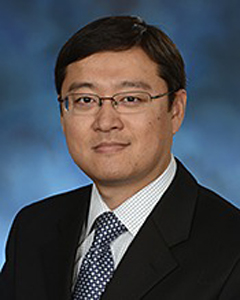Program Information
Achieving Optimal Treatment Workflow Configurations in Multi-Room Proton Centers Via Monte Carlo Simulation
H Zhang*, K Prado, M Mehta, W Regine, W D'Souza, University of Maryland School of Medicine, Baltimore, MD
SU-E-T-241 Sunday 3:00PM - 6:00PM Room: Exhibit HallPurpose: To determine the optimal workflow configuration in a multi-room proton center using Monte Carlo simulation.
Methods: The patient's likely path through a four-room proton center was identified. A simulation describing the sequence of events that each patient would go through within the center was then constructed. The proton center layout was modeled with two "loading rooms" that would service each treatment room. The "loading rooms" were equipped with either setup lasers alone or lasers and CT simulators. It provided either gross patient alignment or fine patient alignment. The duration of each step (input to the Monte Carlo simulation) was randomly drawn from analytical distributions based on clinical estimates of means and variances. Patient flow within the facility included checking in, immobilization and positioning, transit to gantry room, treatment delivery, and discharge. Patient positioning time consisted of laser time and different imaging time. Other parameters modeled stochastically included cancer case mix, cyclotron switching time between gantry rooms, gantry rotation time and treatment fields. We simulated 100 working days and each day consisted of 14 hours (two shifts). Decision variables were patient arrival rate, in-room imaging or out-of-room imaging. We examined our results by evaluating patient throughput, patient wait times and cyclotron and treatment room utilization.
Results: Both out-of-room setups (gross patient alignment or fine patient alignment) resulted in high utilization of cyclotron (93% and 98%) when comparing to in-room setup (83%). For the two out-of-room setups, there was a trade-off between cyclotron utilization and treatment room utilization. Although fine patient alignment increased the patient throughput by 14% comparing to gross patient alignment, it was not cost effective to equip all eight loading rooms with CT simulators.
Conclusion: The impact of out-of-room imaging was significant in increasing patient throughput and cyclotron utilization with either gross or fine patient alignment.
Contact Email:


